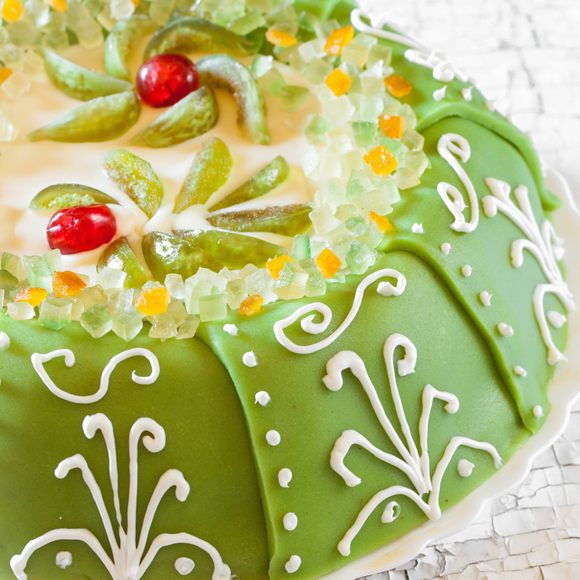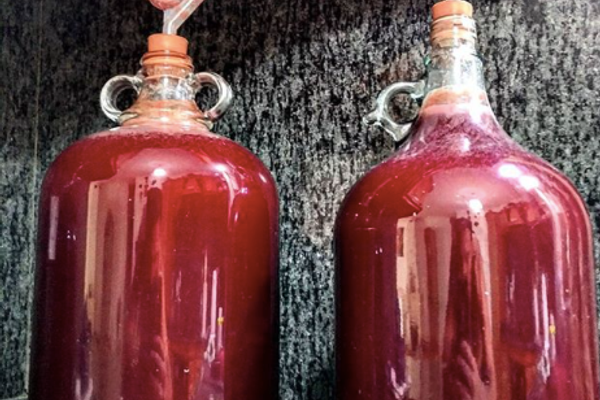Sweets
Cassata Siciliana
The seductively delicious Easter cake once made an entire convent neglect its prayers.
Sicily’s most elegant dolce is cassata Siciliana. The Baroque-style treat begins with a liqueur-soaked sponge cake, then layers on sweetened ricotta, pistachio-tinted marzipan, white glaze, and colorful candied fruit.
The sweet is traditionally served at Easter, to celebrate the breaking of the Lenten fast. In fact, Sicilians have a proverb: Tintu è cu nun mancia a cassata a matina ri Pasqua, which translates to “Sad is the one who does not eat cassata on Easter morning.”
Nuns began the tradition of making cassata for Easter. Sometimes the tempting treat proved too much, even for the devout. In 1574, nuns at a convent in the Sicilian village of Mazara del Vallo enjoyed making and eating the cake so much that they neglected their prayers. As a result, the local diocese banned cassata-making during Holy Week.
The Baroque version that’s enjoyed today was invented in the late 19th century by a Palermo baker named Salvatore Guli. Taking inspiration from the nuns in Palermo’s Martorana convent, who famously made marzipan to resemble fruits, Guli added marzipan and colorful swirls of sweet decorations to the original cassata recipe.
Cassata Siciliana showcases the mix of historical cultures that make Sicily so special. Sugar, almond, lemons, and oranges came from Arab cultures. The sponge cake came from Spain and the white fondente icing from France. The mix of history, culture, and flavors all add up to a timeless Easter treat.
Where to Try It
-
In Sicily’s capital city, where Cassata Siciliana originated, this bakery is a favorite.
-
I Dolce di Nonna Vincenza
Piazza San Placido 7, Catania, 95131, ItalyThis old-world styled bakery preserves Sicilian traditions, with excellent cassata and loads of other goodies. There are other locations in Catania, Rome, Bologna, and Milan.
Written By
 Susan Van Allen
Susan Van Allen
Sources
- www.eater.com/2017/4/14/15302544/cassata-easter-cake-italy-sicily
- www.saveur.com/article/Recipes/Cassata-Ricotta-Cake
- books.google.com/books?id=R1bCBwAAQBAJ&pg=PA117&lpg=PA117&dq=nuns+1574+cassata&source=bl&ots=TUKfSrc3C5&sig=DNlZPZqlmYqTc6k7JNNoTJImrGw&hl=en&sa=X&ved=0ahUKEwiQ27H765TaAhVioFkKHZqsCGYQ6AEIajAK#v=onepage&q=nuns%201574%20cassata&f=false
- www.palermotoday.it/politica/targa-inventore-cassata-palazzo-guli.html














